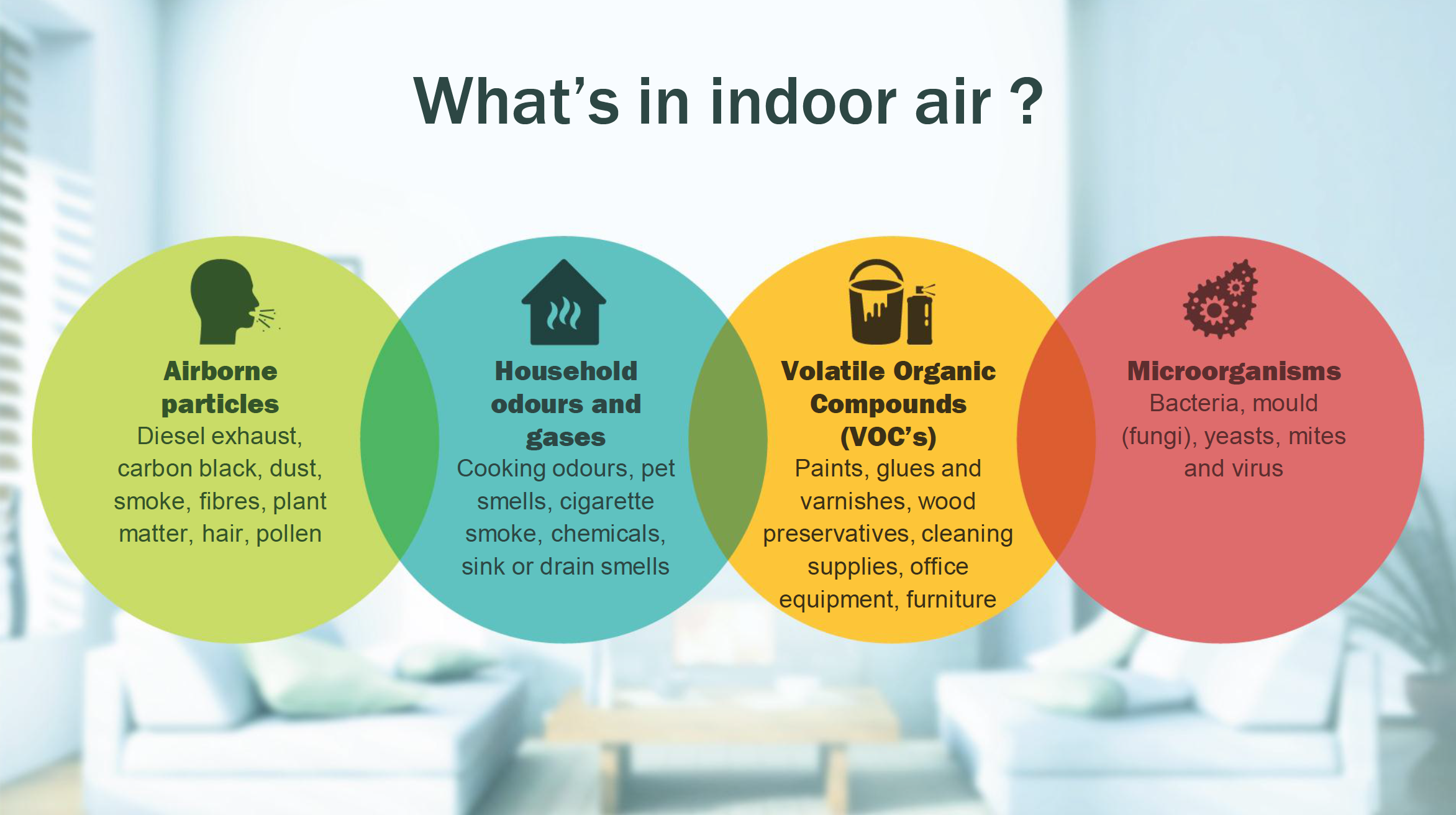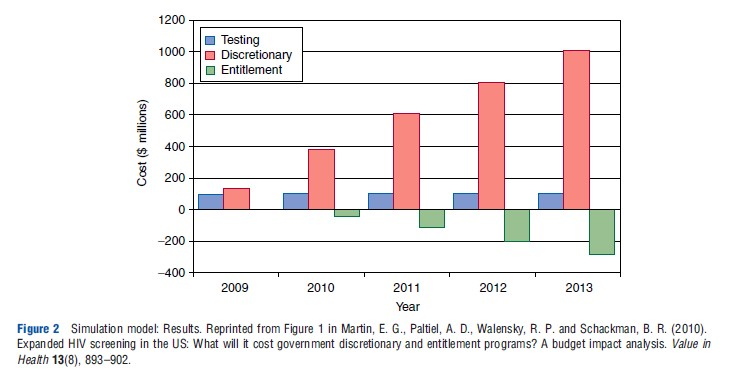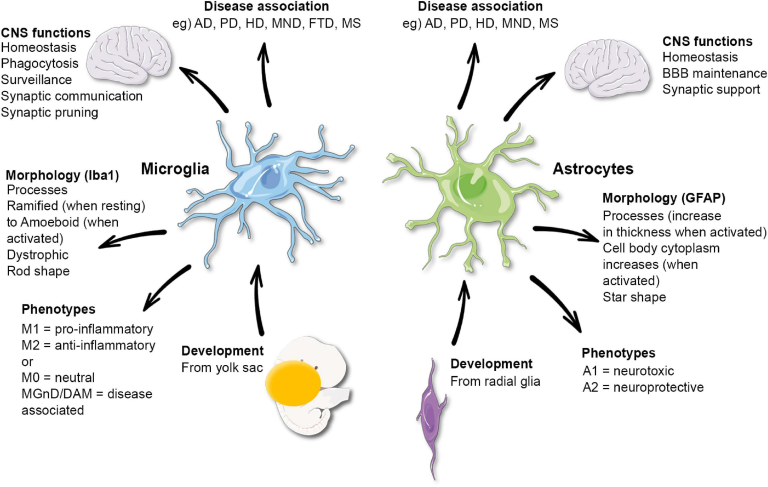Indoor air quality plays a crucial role in our overall health and well-being, yet many people remain unaware of its significance. As we spend about 90% of our lives indoors, often in homes, offices, and schools, the indoor air we breathe can become a source of indoor air pollution that directly impacts cognitive function, productivity, and workplace health. Poor ventilation rates and the presence of harmful pollutants can lead to discomfort and a decline in our mental faculties, making it imperative to understand the hidden dangers lurking within our enclosed spaces. In light of research by Harvard experts, it’s essential to examine how building designs and air quality standards can transform our environments into healthy buildings that promote not just physical but also mental well-being. With proper measures, individuals and organizations can drastically improve their air quality, fostering healthier and more productive spaces for all.
The quality of the air we breathe indoors is increasingly being recognized as a vital aspect of our health and comfort. This environmental factor includes elements such as the presence of pollutants, proper ventilation, and overall air circulation. As our lives become more centered around indoor environments—whether at home or in the workplace—understanding indoor air pollution becomes essential for enhancing cognitive abilities and ensuring optimal health. Factors like air exchange rates, filtration systems, and building maintenance can greatly affect our day-to-day functioning. By prioritizing clean air in our living and working spaces, we can create nurturing atmospheres that foster wellness and productivity.
Understanding Indoor Air Quality
Indoor air quality (IAQ) is a critical aspect of our environment, significantly influencing our health and wellness. Research indicates that individuals spend about 90% of their time indoors, leading to potential exposure to various indoor air pollutants, including volatile organic compounds (VOCs), dust, and biological contaminants. Poor indoor air quality can lead to chronic health issues such as respiratory diseases, allergies, and even mental health conditions. Hence, understanding what constitutes good IAQ is essential for creating healthier spaces.
To enhance indoor air quality, one must consider several factors, including ventilation rates, humidity control, and the use of non-toxic materials in building construction. Studies show that improved ventilation can lead to better cognitive function among workers, as found in a 2015 Harvard study that highlighted the importance of adequate air circulation. Implementing proper ventilation not only reduces indoor air pollutants but also helps in managing indoor moisture levels, denting mold growth and other hazards.
The Impact of Indoor Air Pollution on Health
Indoor air pollution poses several health risks often overlooked in everyday life. Common sources of these pollutants include household cleaning products, paints, and even the occupants’ own body odors, collectively known as bioeffluents. These substances can lead to adverse health outcomes, particularly in densely populated settings like apartments where air exchange between units can exacerbate pollution levels. Understanding these factors is crucial for maintaining a healthy indoor environment.
Furthermore, exposure to poor indoor air can result in reduced cognitive function, fatigue, and decreased productivity. When workplaces prioritize air quality, utilizing strategies such as high-efficiency particulate air (HEPA) filters, and frequent air exchanges, employees tend to perform better. By addressing indoor air pollution effectively, organizations can foster better health outcomes for their staff and contribute to a more productive work atmosphere.
Enhancing Cognitive Function Through Healthy Buildings
The design and maintenance of buildings play a vital role in supporting cognitive function and overall health outcomes for occupants. Recent evidence suggests that factors such as natural light, temperature control, and modern ventilation systems can significantly enhance the mental acuity of individuals spending long hours indoors. A well-optimized interior can elevate mood, increase focus, and facilitate problem-solving abilities.
For instance, spaces with improved air quality not only reduce fatigue but also promote innovative thinking and creativity. By choosing materials that minimize VOC emissions and ensuring ample ventilation rates, property owners can create a working environment that maximizes cognitive performance. This concept drives the philosophy behind healthy buildings; buildings that not only shelter us but actively contribute to our well-being.
The Importance of Ventilation Rates
Ventilation rates are critical in ensuring a healthy indoor environment as they determine the flow of fresh outdoor air into a building. Historically, building codes have evolved significantly, notably since the 1970s, when health concerns led to a reevaluation of air quality standards. Ensuring proper ventilation helps mitigate the levels of indoor air pollutants, reduces the risk of respiratory illnesses, and enhances overall comfort.
Increased ventilation rates have been linked to improved workplace health outcomes, particularly in commercial real estate. Well-ventilated offices can boost employee productivity and satisfaction, ultimately affecting the organization’s bottom line. Regularly assessing and upgrading ventilation systems is a proactive approach to ensuring the health of occupants and the effectiveness of indoor air quality management.
Strategies for Maintaining Indoor Air Quality
Maintaining optimal indoor air quality requires a multi-faceted approach incorporating various strategies. Frequent cleaning and minimizing the use of harmful chemicals are essential first steps. Additionally, employing air purification systems, like HEPA filters, can significantly reduce airborne particles and allergens. Regular maintenance checks on HVAC systems also prevent the buildup of pollutants, aiding in consistent air quality management.
Another effective strategy is to integrate plants into the workspace. Certain plants can naturally purify the air, absorbing toxins and releasing oxygen. Not only do these plants enhance the aesthetic of indoor spaces, but they also contribute positively to mental well-being. By creating a greener indoor environment, we not only improve aesthetics but also enhance our cognitive function and reduce stress levels.
The Link Between Sick Buildings and Well-being
The ‘sick building syndrome’ is a term that encapsulates the myriad health issues stemming from poor indoor air quality. Occupants of such buildings often report symptoms like headaches, fatigue, and respiratory problems. This syndrome emphasizes the necessity for rigorous building management and design standards, ensuring that spaces are conducive to health and well-being.
Understanding the relationship between our environment and health is paramount. When buildings are designed with occupant health in mind, it can significantly reduce the prevalence of sick building syndrome. With increasing awareness, more organizations are recognizing the need to implement healthier practices in their facilities, paving the way for both improved health outcomes and heightened productivity.
Elevating Workplace Health through Design
Workplace health extends beyond basic infection control; it encompasses a holistic approach to building design and maintenance. Healthy workspaces prioritize ventilation, air quality, and environmental factors that can boost employee morale and efficiency. Organizations that invest in healthy buildings often experience reduced absenteeism and improved employee retention rates.
Moreover, by fostering a culture that values health, companies can enhance teamwork and collaboration. Spaces designed for comfort and well-being encourage employees to engage more with one another, fostering a productive work atmosphere. Thus, emphasizing proper building design principles directly correlates with workplace health, leading toward a thriving corporate environment.
Reducing Infectious Disease Spread Indoors
One of the pressing challenges in indoor spaces is the transmission of infectious diseases. Elevating indoor air quality through enhanced ventilation and effective filtration systems can significantly mitigate this risk. For instance, adding portable air cleaners with HEPA filters can help capture airborne viruses and bacteria, leading to a healthier environment.
In addition to improving ventilation, implementing routine cleaning and maintenance practices is just as crucial. By ensuring that high-touch surfaces are regularly disinfected and maintaining a clean air supply, organizations can effectively reduce the risk of outbreak. These measures not only protect the health of individuals within the facility but also instill confidence in clients and stakeholders about the commitment toward a safe environment.
Long-term Benefits of Healthy Buildings
Investing in healthy buildings is not just beneficial in the short term; it presents long-term advantages that can impact individual health and organizational performance. Healthy buildings lead to improved occupant satisfaction, which can translate to higher productivity rates. Over time, companies that prioritize the health of their buildings may see a decrease in healthcare costs due to reduced employee sickness and absenteeism.
Moreover, healthy buildings can contribute to positive environmental outcomes, promoting sustainability and energy efficiency. Such practices resonate well with employees and consumers alike, creating a positive public image for organizations. In the long run, the comprehensive benefits of investing in indoor air quality and building health far outweigh the initial costs associated with upgrades and maintenance.
Frequently Asked Questions
What is indoor air quality and why is it important for healthy buildings?
Indoor air quality refers to the condition of the air inside buildings and its impact on the health and comfort of occupants. It is essential for healthy buildings because poor indoor air quality can lead to issues such as respiratory problems, allergic reactions, and decreased cognitive function, ultimately affecting workplace health and productivity.
How does indoor air pollution affect cognitive function in workplaces?
Indoor air pollution can significantly impair cognitive function. Poor ventilation rates and the presence of pollutants like volatile organic compounds (VOCs) have been linked to reduced focus and increased cognitive errors, making it crucial to maintain high indoor air quality for optimal workplace health.
What role do ventilation rates play in maintaining good indoor air quality?
Ventilation rates are vital for maintaining good indoor air quality, as they determine how much outdoor air is brought into a building. Higher ventilation rates can dilute indoor air pollutants, enhance oxygen levels, and reduce the incidence of health issues, thereby promoting overall wellness in healthy buildings.
Can improving indoor air quality enhance concentration and productivity?
Yes, improving indoor air quality can enhance concentration and productivity. Studies show that better ventilation and lower levels of indoor air pollution lead to improved cognitive performance, allowing employees to work more efficiently and effectively.
What are some common sources of indoor air pollution in buildings?
Common sources of indoor air pollution include mold, dust mites, pet dander, off-gassing from building materials, and chemical cleaners. Regular maintenance, adequate ventilation, and using air purifiers can help mitigate these pollutants and improve indoor air quality.
How can building occupants minimize the effects of indoor air pollution?
Building occupants can minimize the effects of indoor air pollution by ensuring proper ventilation, regularly changing air filters in HVAC systems, avoiding the use of harsh chemicals, and maintaining clean indoor environments. These actions contribute to better indoor air quality and overall health.
What are the health implications of inadequate indoor air quality?
Inadequate indoor air quality can lead to various health issues, including headaches, fatigue, respiratory illnesses, and long-term effects such as chronic health conditions. Maintaining good indoor air quality is crucial for promoting a healthy environment in workplaces and homes.
How can employers improve indoor air quality in the workplace?
Employers can improve indoor air quality by increasing ventilation rates, implementing regular maintenance on HVAC systems, using air purifiers, and encouraging practices that reduce indoor pollutants, thereby enhancing workplace health and employee well-being.
What steps can I take at home to ensure healthy indoor air quality?
At home, you can ensure healthy indoor air quality by regularly ventilating your space, using high-efficiency filters, controlling humidity, reducing the use of chemical cleaners, and minimizing clutter that can trap dust. These actions will promote a healthier living environment.
Is outdoor air pollution a concern for indoor air quality?
Yes, outdoor air pollution is a concern for indoor air quality as it can infiltrate buildings, especially in urban areas. Ensuring effective ventilation and using air filtration systems can help reduce the impact of outdoor pollutants on indoor spaces.
| Key Point | Details |
|---|---|
| Indoor Air Quality’s Impact | Indoor air quality significantly impacts our health, cognitive function, and overall well-being. |
| Time Spent Indoors | Americans spend on average over 80% of their lives indoors, making air quality crucial. |
| Benefits of Air Ventilation | Increased air ventilation in workspaces improves cognitive functions and productivity. |
| Pollution Exposure | People are often exposed to higher levels of outdoor air pollution indoors than they realize. |
| Air Quality from Neighbors | In apartments, a significant portion of indoor air can come from neighboring units. |
| Healthier Building Opportunities | There are many opportunities to improve indoor air quality in buildings. |
| Infectious Disease Prevention | Bringing in outdoor air and using HEPA filters can reduce the spread of diseases. |
| Active Chemicals in Dust | Dust in indoor environments can have hormonally active components. |
| EPA Regulation of Chemicals | Since 1976, only a small number of chemicals have been banned by the EPA. |
Summary
Indoor air quality is essential for maintaining a healthy lifestyle. With many of us spending the majority of our time indoors, understanding how air quality affects our health is crucial. Factors such as indoor air pollution, ventilation rates, and even the air exchanged with neighboring units can significantly impact our well-being. By improving our indoor environments and increasing air quality, we can enhance cognitive functions, reduce illness, and ultimately lead healthier lives.









